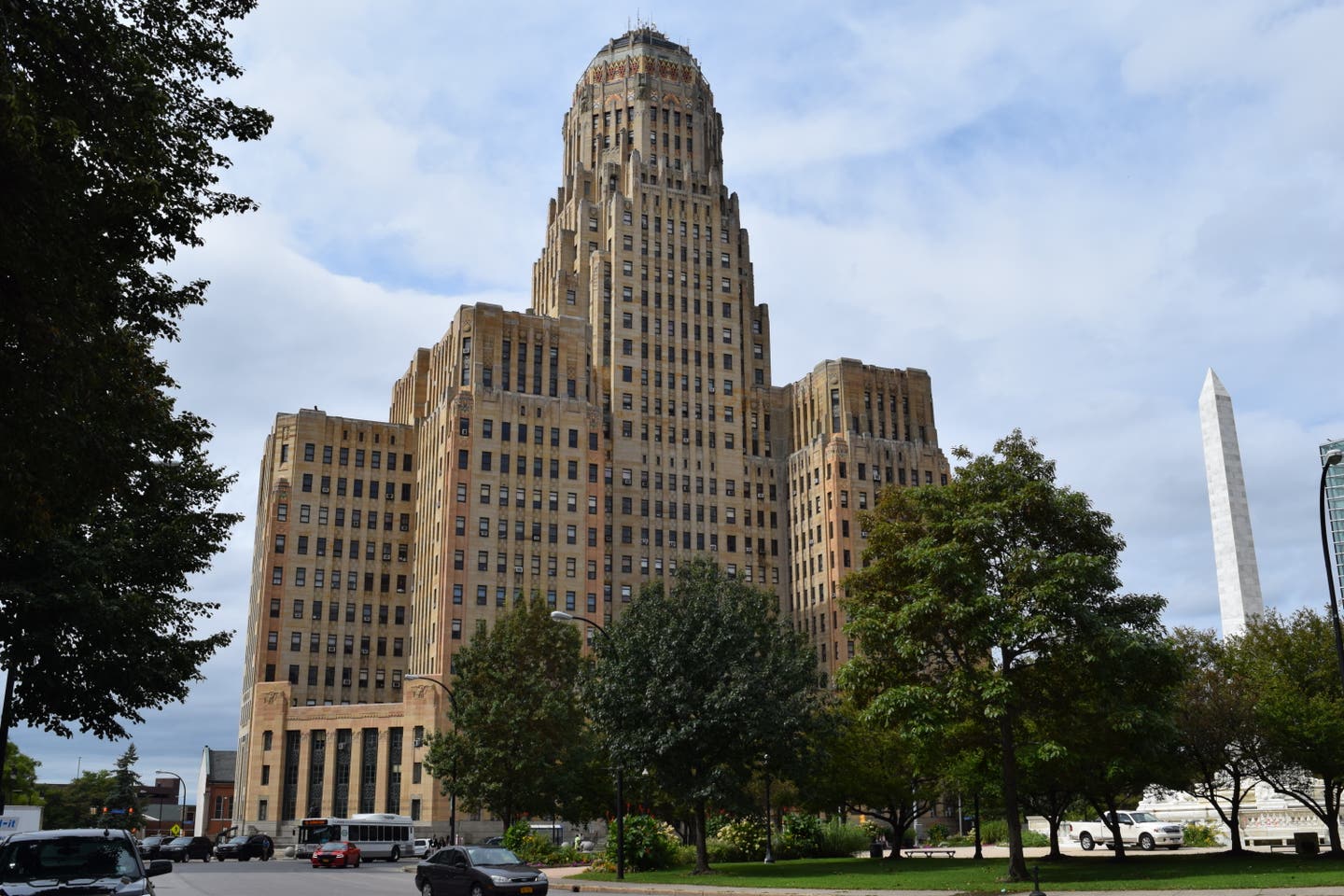
Features
APT Buffalo
Founded in 1968 as joint venture by preservationists from Canada and the United States, The Association for Preservation Technology (APT) has grown and matured over the past half-century to become the go-to, cross-disciplinary organization for promoting the best technology for conserving historic structures and their settings. What’s more, their events are now major meeting grounds of the historic building field at large—all in evidence around the Buffalo-Niagara Convention Center over seven days.
For an organization with members now in over 30 countries and a scope that embraces nearly every structure type, Buffalo was the perfect venue. A port and a cultural tidal zone between the American East and Midwest (not to mention Canada and the US), Buffalo’s collection of world-class architecture added its own dimension to the conference. Just steps from the Convention Center I wasted no time in visiting my favorite Louis Sullivan skyscraper, the 1896 Guaranty Building, alive with the Lieber Meister’s intricate, intertwining façade ornament. Nearby I couldn’t miss the abstract geometry of 1931 Buffalo City Hall, a striking counterpoint, so I explored this Art Deco masterpiece with good colleagues and friends John Leeke and Brent Hull. Promptly elevatoring up 32 storeys to the renowned pinnacle Observatory, we took in a sweeping panorama of the city in all directions.
In fact, insider guided tours are a perennial strength and highlight of APT conferences large and small, and this year’s event set a new high-water mark. Field sessions ranged from the Olmsted and Vaux-designed park system, to built examples of masterworks by Richardson, Sullivan, and Wright as well as Rudolph, Yamasaki, and the Saarinens, to waterside looks at the mammoth concrete Buffalo Grain Elevators and the world’s oldest active fireboat. For my part, I spent an afternoon with a group seeing firsthand how underground wells are supplying the heating and cooling needs for structures as diverse as a rescued 1880s church-cum-music venue and Frank Lloyd Wright’s recently restored 1903-5 Darwin Martin House complex. While I learned that in some projects it’s more cost-effective just to sink an extra well or two, rather than to test the output of each new well, I also got to tune-up my vocabulary. The correct term for this technology, ground-source heat pump, has never rolled off the tongue for anybody, but it turns out there’s a push to replace the common parlance geothermal (which properly refers to hot spring type sources) with geoexchange. For a technical wordsmith like yours truly, this is red meat!
Indeed, change was one of the latent themes of the conference across all tracks and events, not only in the ever fast-moving field of technology but also our appreciation of what is preservation or worth preserving. For example, the concurrent Plenary Sessions addressed current questions on redefining Brutalism and Post-War architecture and the growing impact of climate change as well as retrospectives like “Fifty Years of Preservation Philosophies and Approaches.” A two-day field session took attendees to the venerable Willowbank School of Restoration Arts in nearby Ontario for an in-depth workshop in non-destructive testing. That’s a far cry from an early APT Bulletin article I once read about peering into walls with x-ray equipment built for dairy cows.
In classic APT-style, the 70-plus paper sessions were engineered into tracks that ran from the macro (“Re-envisioning Historic Industrial and Transportation Infrastructure”) to the micro (“Materials over Time”). Among the latter, I took in an absorbing presentation by the folks at John G. Waite Architects about restoring a dazzling terrazzo fountain—just a sampling of their work at Cincinnati’s landmark Union Terminal. As ever, the issues with these immense and often beloved structures is not only how to resurrect them technically, but where to find a new purpose now that the last train is long gone.
All during this wealth of education, convention center halls are typically brimming with folks flitting from room to room (like some technical boudoir comedy) or stopping in a corner to commiserate with peers and old friends. In one such instance, I was pleased to catch up with Alex Wilson, the opening keynote speaker for the Conference and to swap tales. I had corresponded Alex, a pioneering publisher and journalist on sustainability, back in the 1990s when I was editor of Old-House Journal and he had founded Building Green, and over the years we had followed each other’s work but had never met,
Another welcome strength of this year’s conference, especially for a “meeting of the mechanically inclined,” was the Exhibit Hall. The robust floor filled with some 50 exhibitors ranged from services in arts both practical and decorative to tools—high-tech lasers and timeless hand scrapers and knives alike.
Awards are another annual event at APT and this year maintained the tradition with rounds of kudos culminating in the Gala Awards Banquet. Of particular note was the awards ceremony for the HABS-Charles E. Peterson Prize. This competition for measured drawings offers cash recognition to promising students—cannily not at the ends of the careers, but at the beginnings where it will be of most use. For this viewer, it was a fitting example of an award-winning 50 Anniversary Conference and a tempting preview of APT next fall 2019 in Miami.
Gordon H. Bock is an architectural historian, instructor with the National Preservation Institute, and speaker through www.gordonbock.com.








